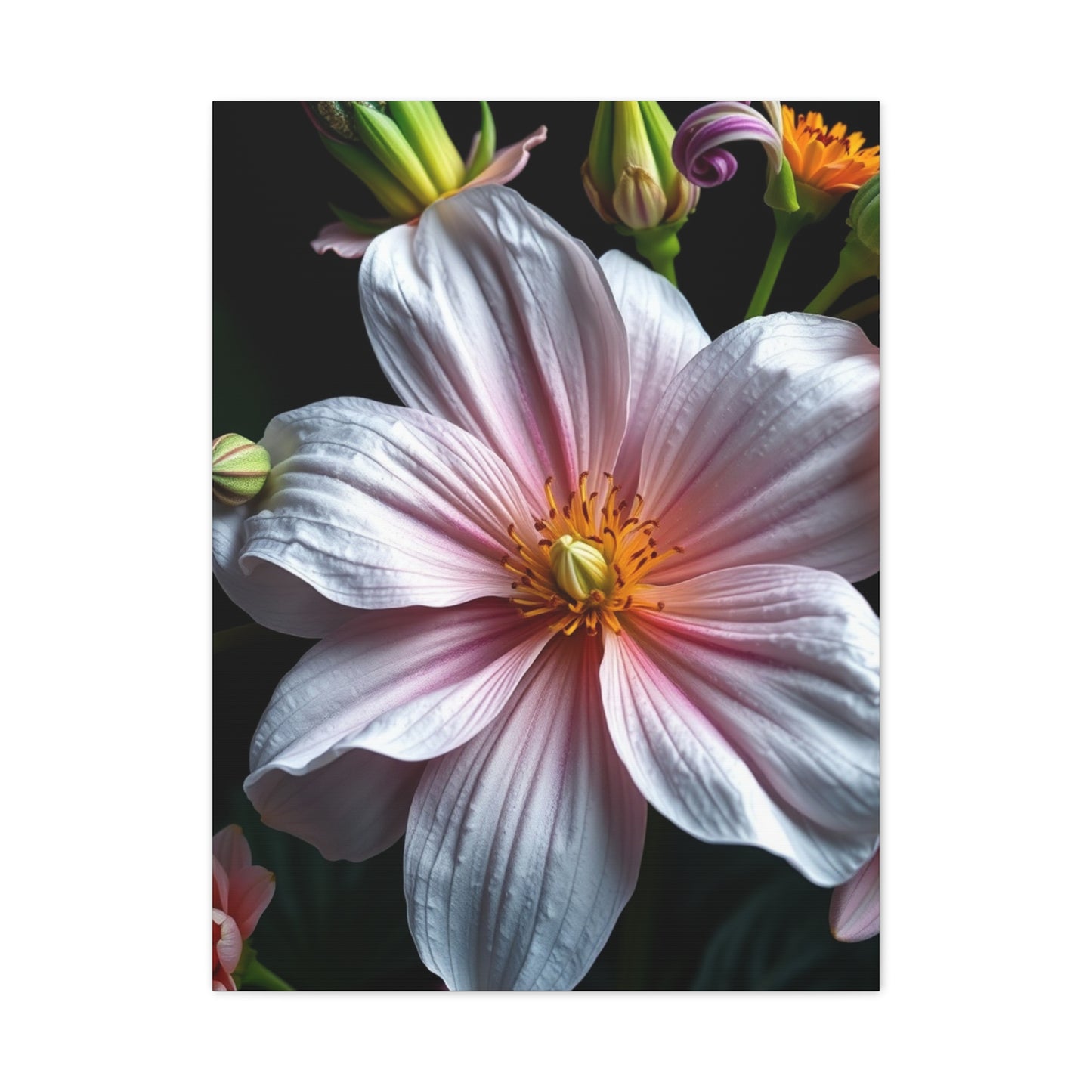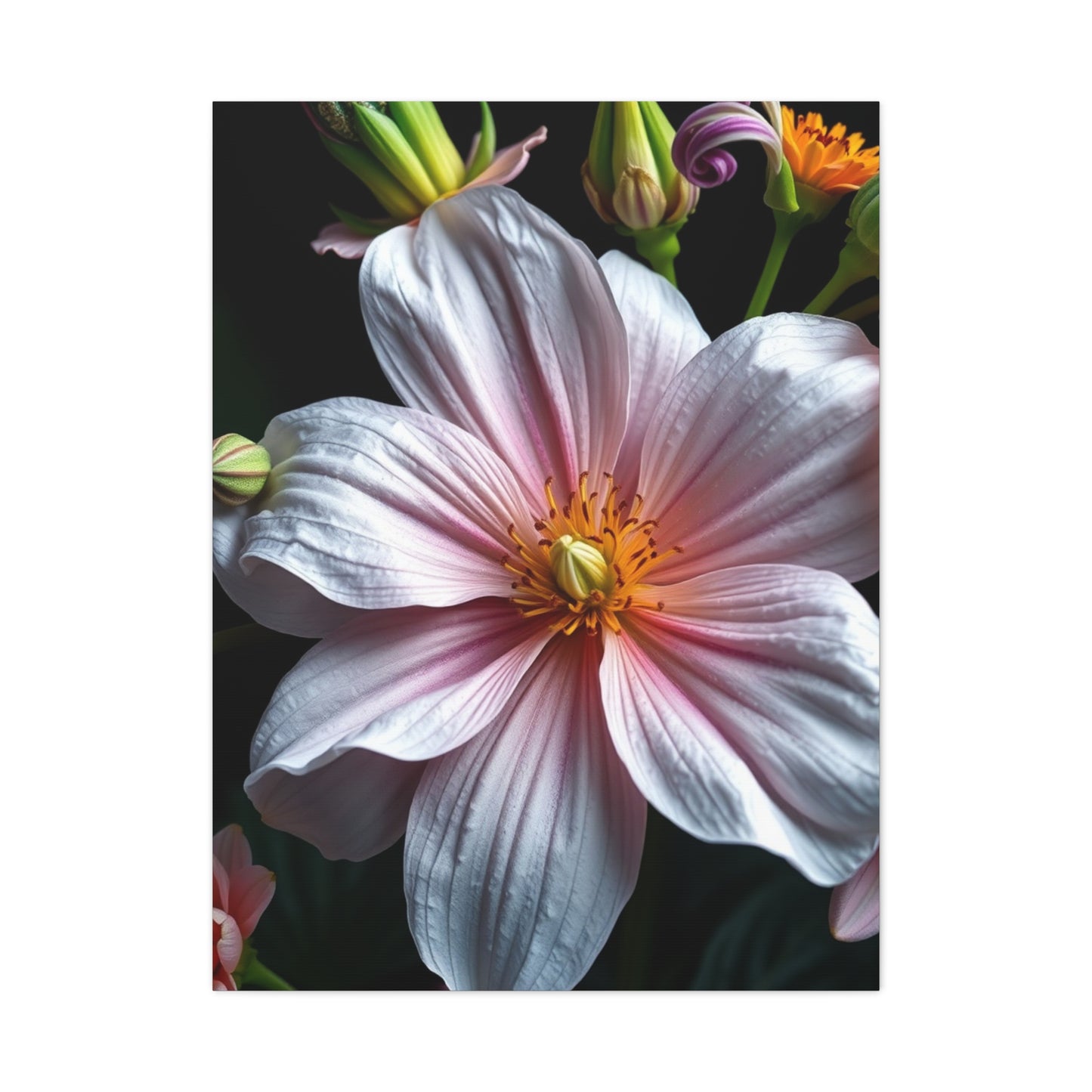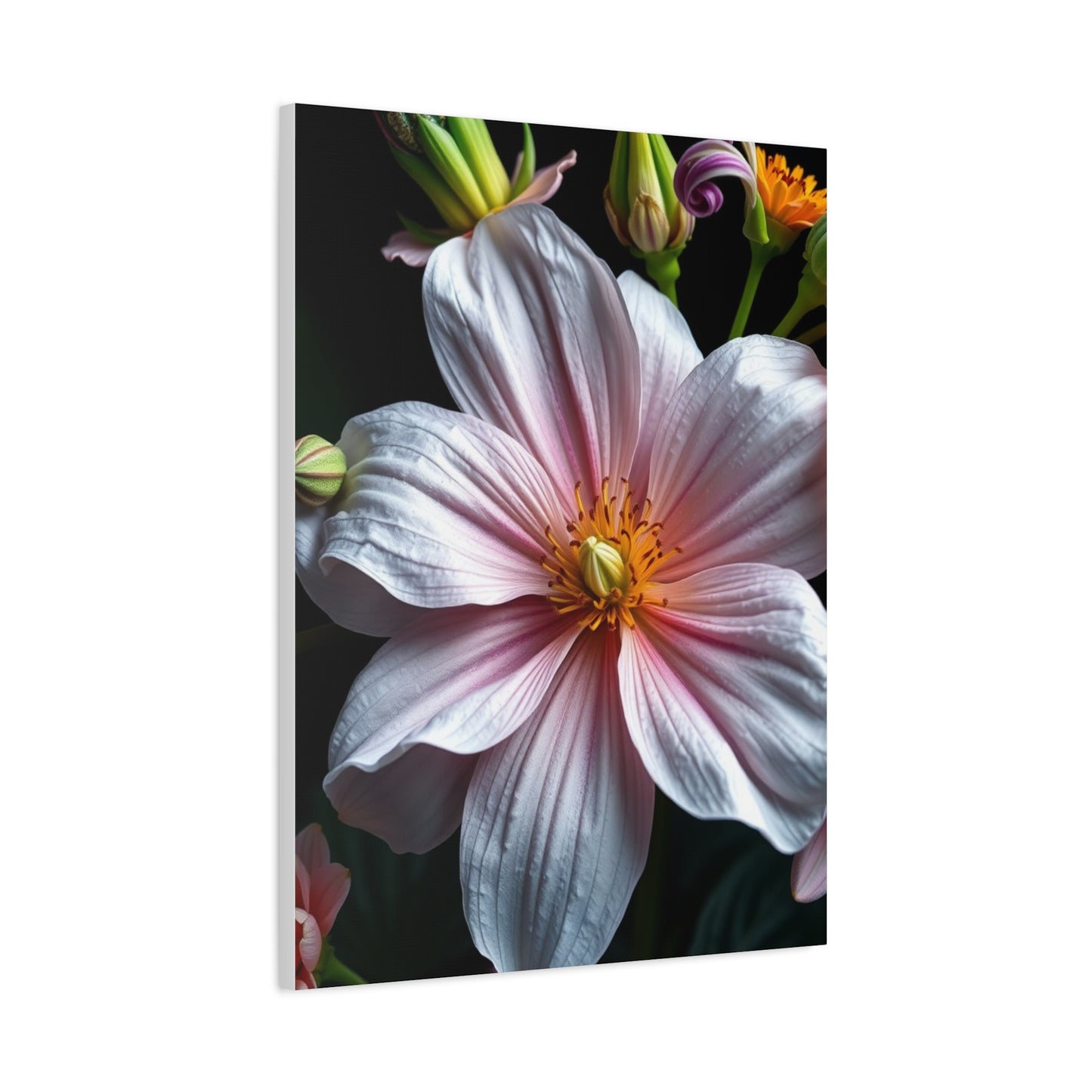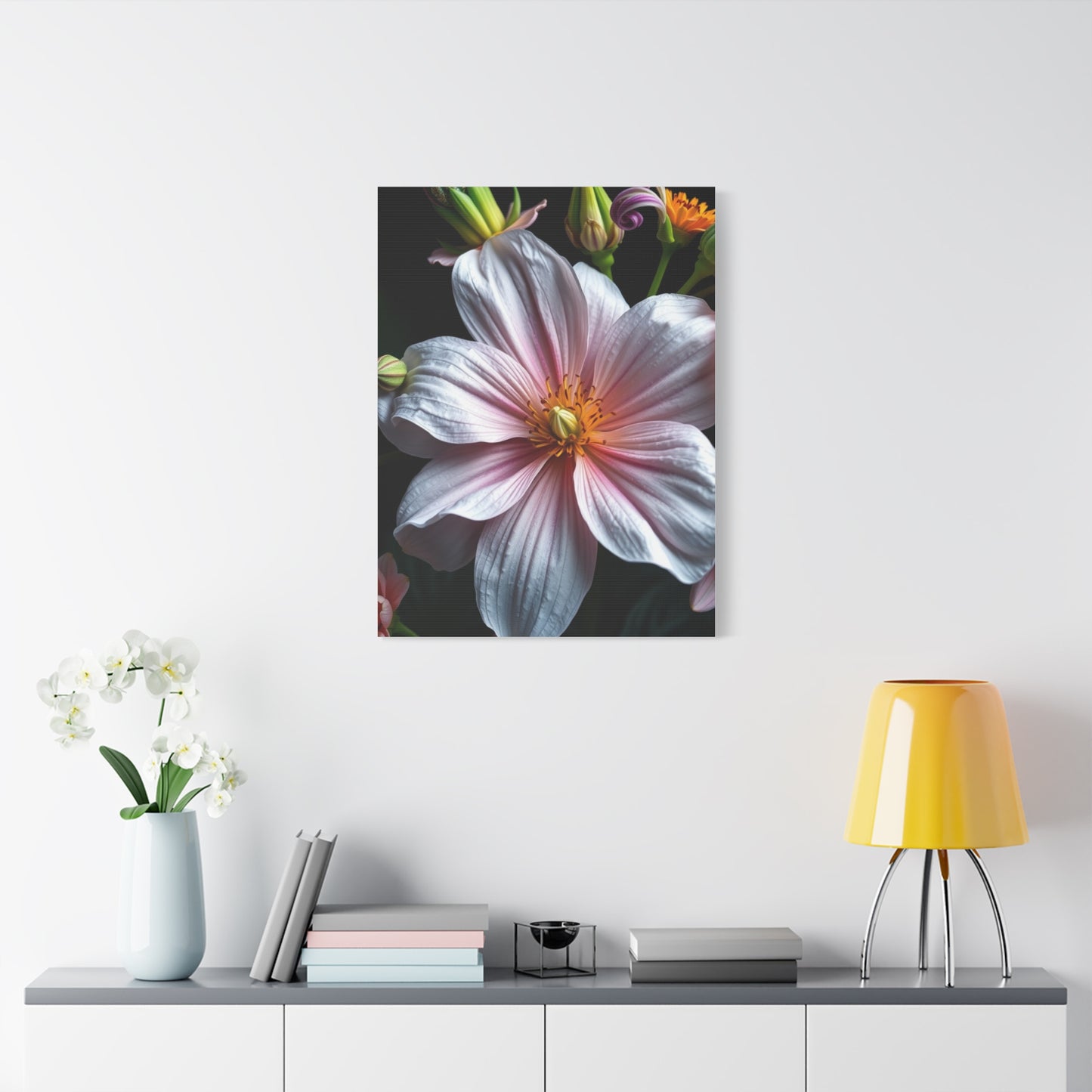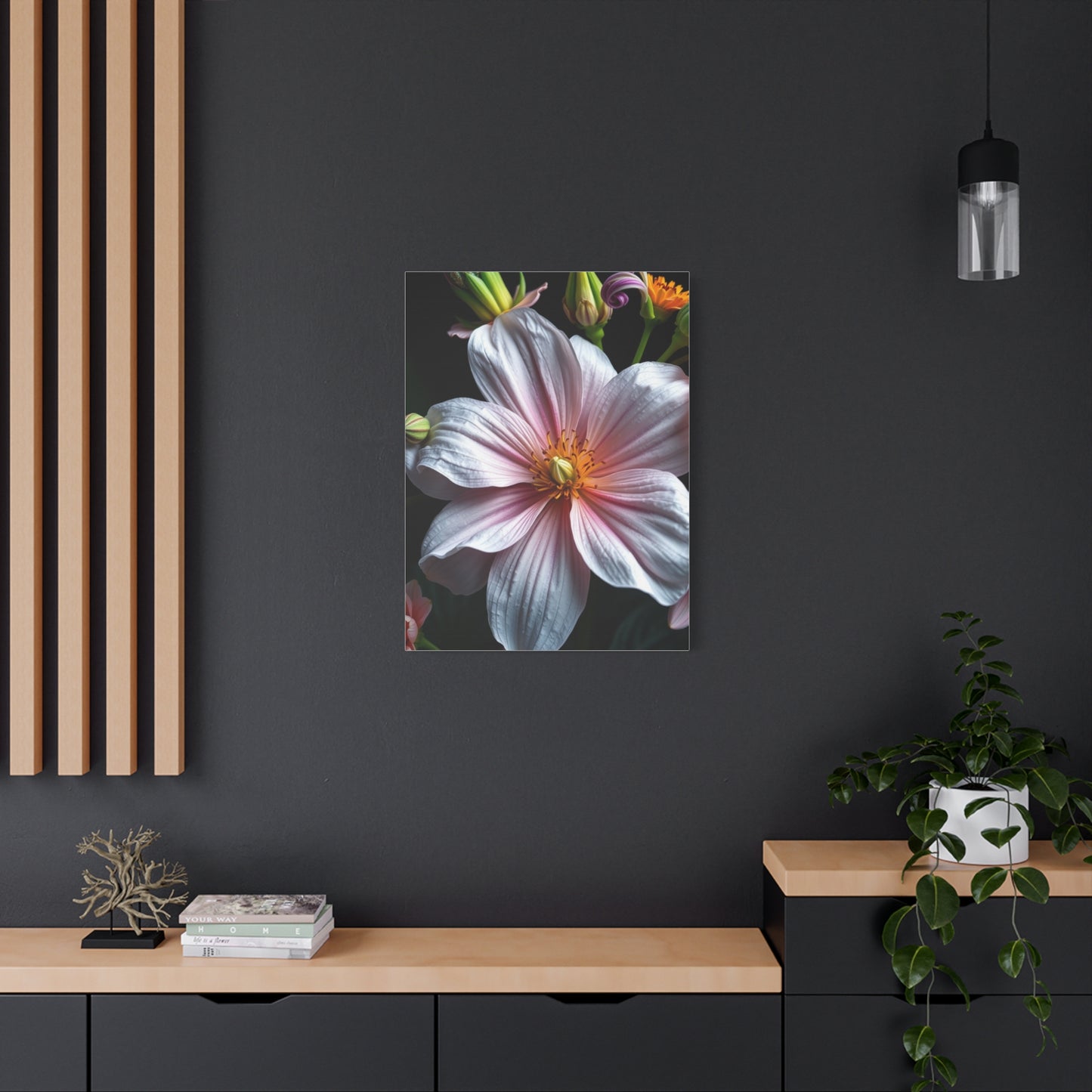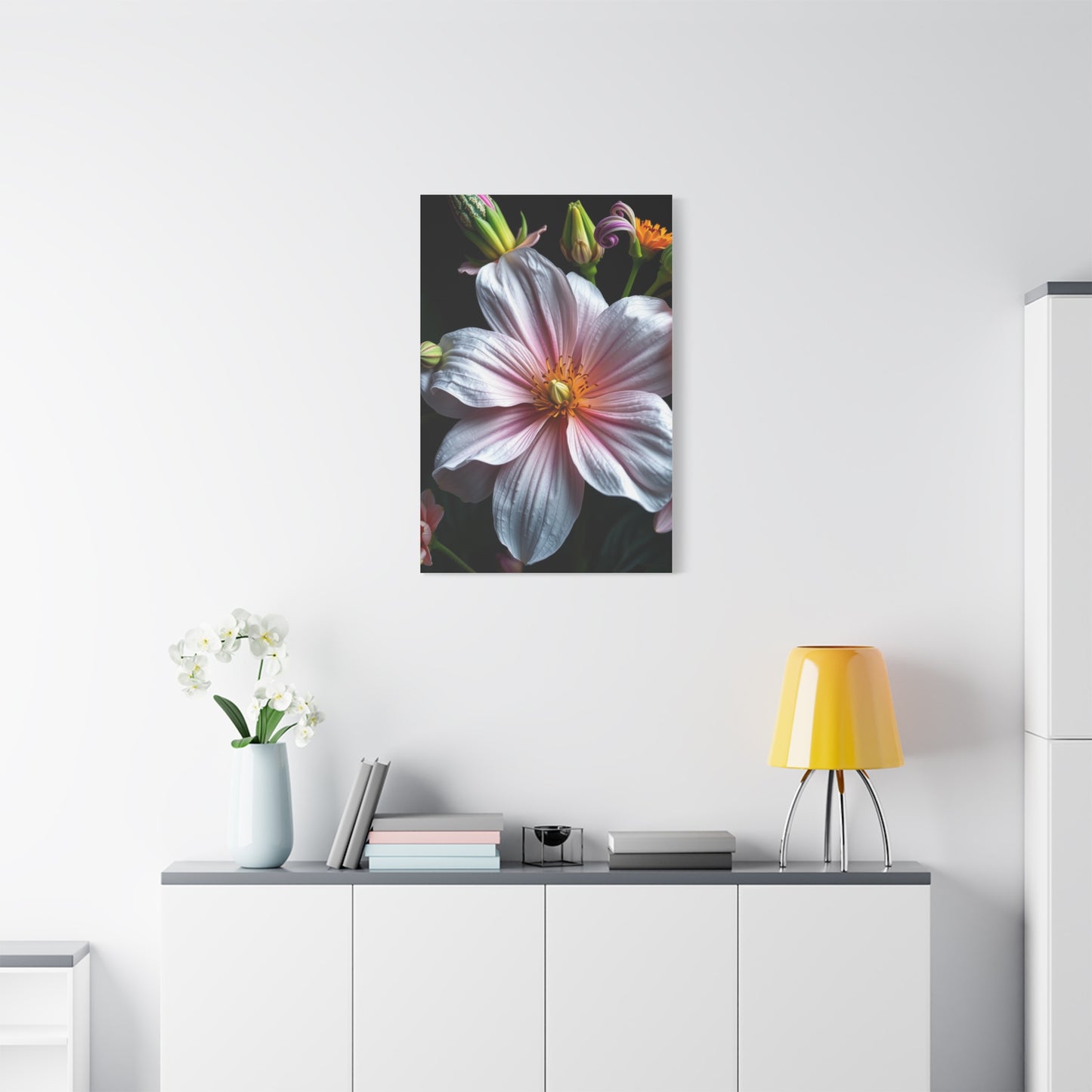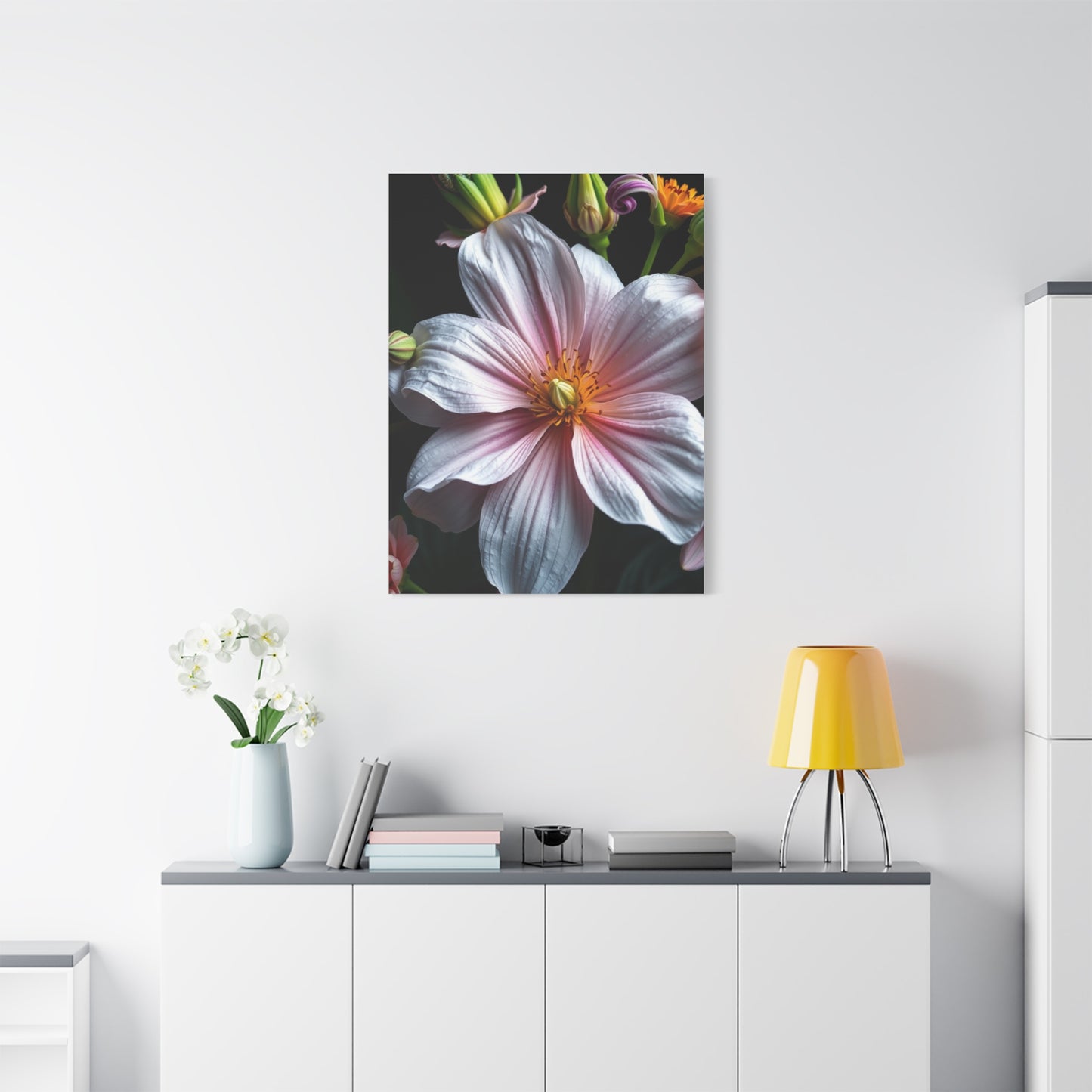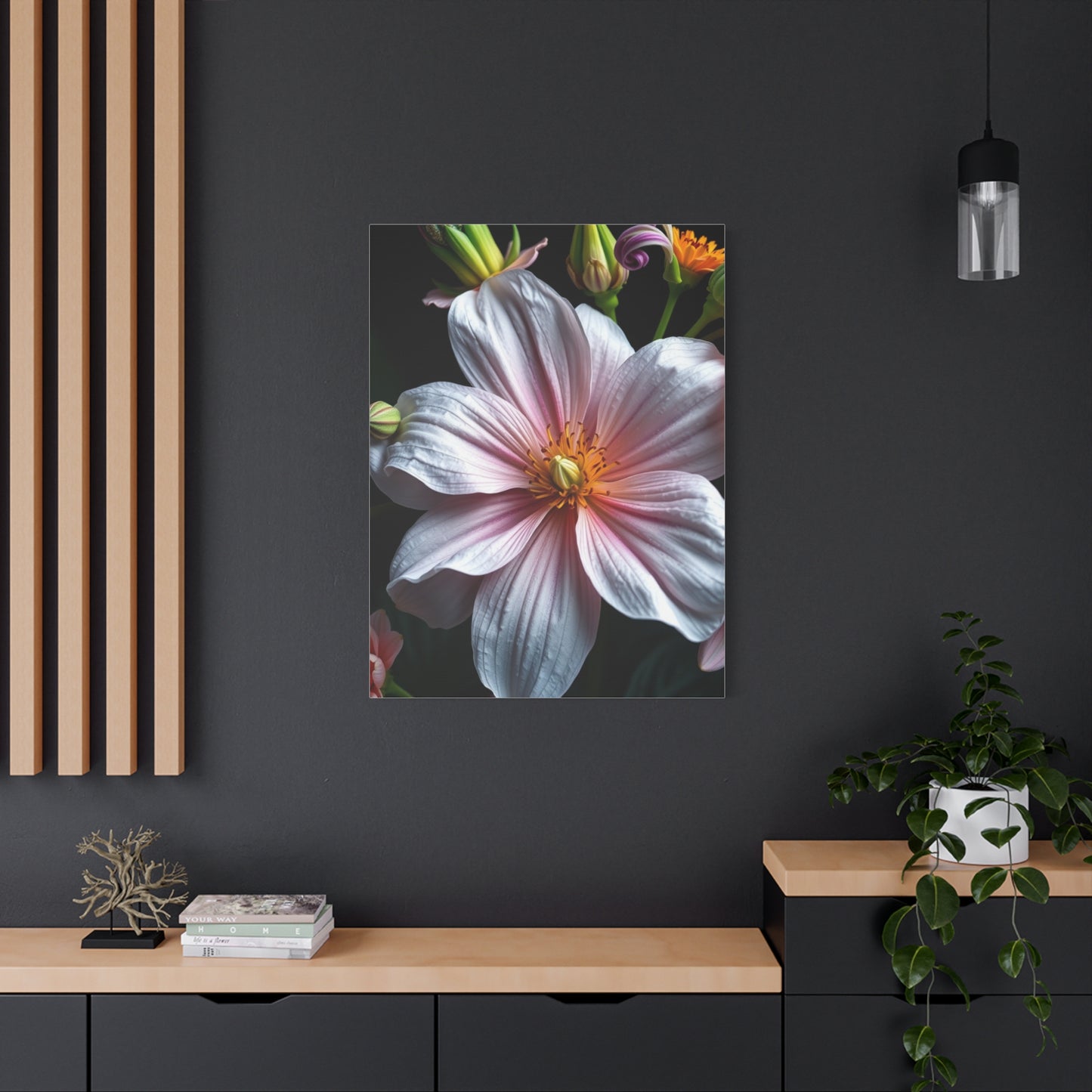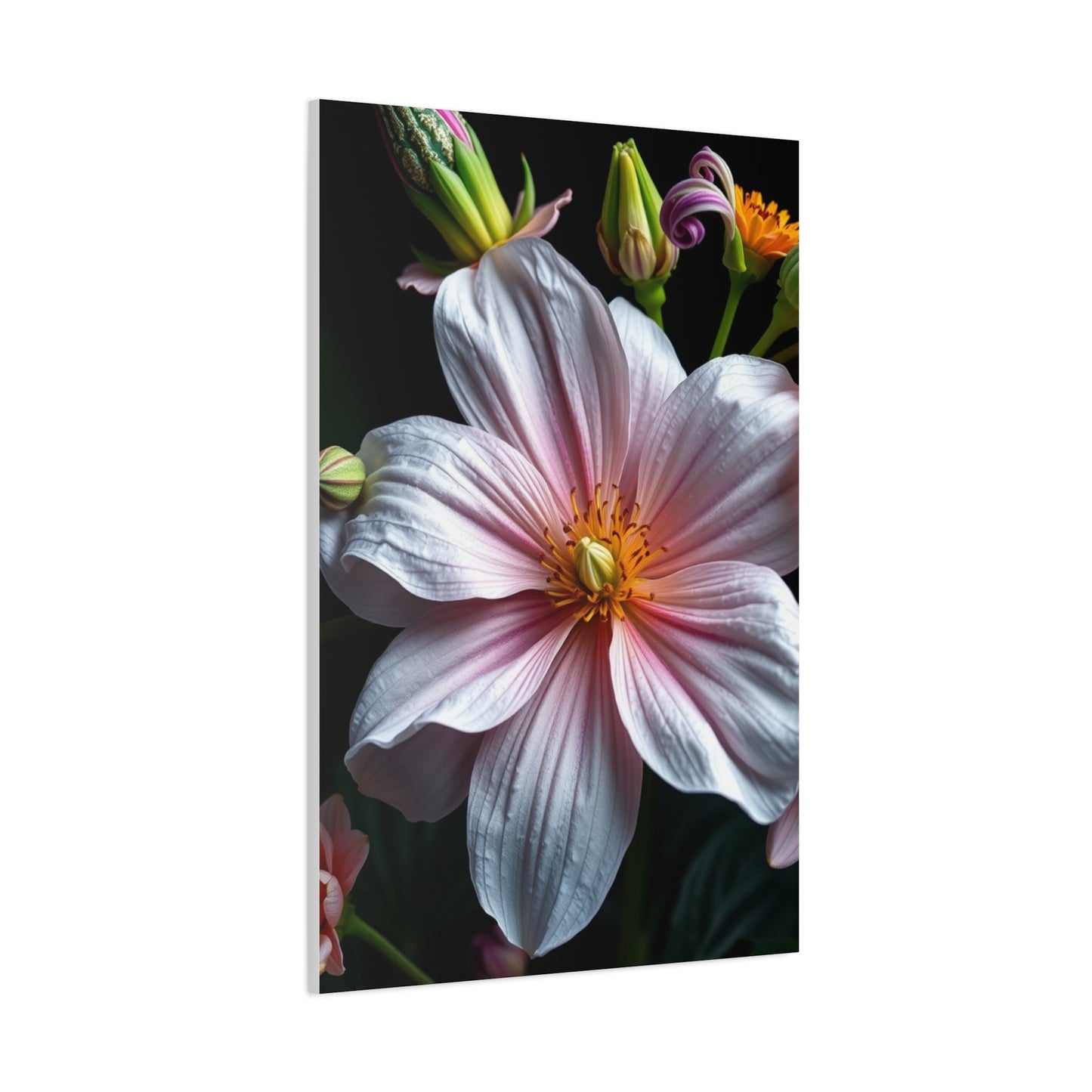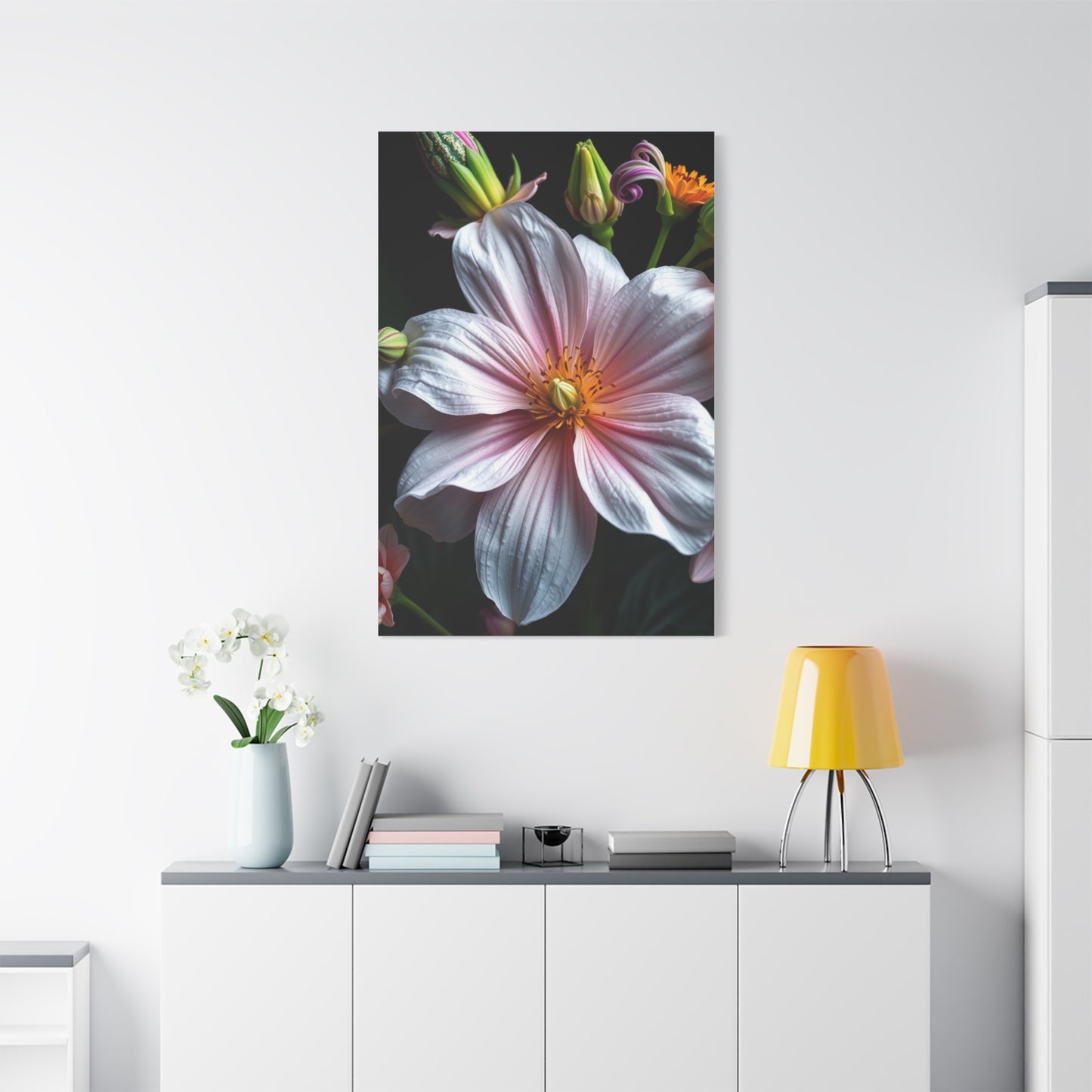The Art of Symmetry and Flow: Understanding the Visual Harmony in Botanical Symphony Canvas Wall art
The intersection of natural elegance and artistic expression has given rise to a transformative movement in interior design where botanical imagery transcends mere decoration to become a statement of refined taste and environmental consciousness. This comprehensive exploration delves into the world of botanical art prints, examining how these nature-inspired masterpieces bring vitality, serenity, and sophistication into contemporary living spaces while honoring the timeless beauty of the natural world.
Botanical art represents more than simple floral depictions; it embodies a celebration of organic forms, colors, and textures that have captivated humanity for centuries. From the delicate veining of leaves to the intricate patterns of petals, these artistic interpretations capture the essence of plant life in ways that resonate deeply with our innate connection to nature. The contemporary botanical art movement has evolved to embrace both classical scientific illustration techniques and modern abstract interpretations, creating a diverse spectrum of styles that appeal to varied aesthetic preferences while maintaining the core principle of honoring natural beauty.
The resurgence of botanical themes in modern interior design reflects a broader cultural shift toward biophilic design principles, which recognize the fundamental human need to connect with nature even within built environments. As urban living increasingly separates us from natural landscapes, botanical art serves as a vital bridge, bringing the calming presence of greenery and florals into homes, offices, and commercial spaces. This artistic approach to incorporating nature into our daily surroundings has been shown to enhance well-being, reduce stress levels, and create environments that feel both sophisticated and nurturing.
Contemporary botanical prints draw inspiration from various sources, including vintage botanical illustrations from scientific expeditions, Japanese woodblock prints, European still life paintings, and modern photography. This rich heritage provides endless creative possibilities for artists and designers who reinterpret traditional botanical themes through contemporary lenses. The result is a dynamic art form that feels simultaneously timeless and current, capable of complementing diverse interior design styles from minimalist Scandinavian aesthetics to maximalist eclectic spaces.
The technical execution of botanical art has evolved significantly with advances in printing technology, allowing for unprecedented detail reproduction and color accuracy. High-quality canvas prints now capture the subtle gradations of color in flower petals, the textured appearance of bark, and the translucent quality of leaves with remarkable fidelity. This technological progress has democratized access to museum-quality botanical art, enabling homeowners to incorporate sophisticated natural imagery into their spaces without the prohibitive costs associated with original paintings or rare antique prints.
Why Canvas Prints Featuring Botanical Themes Are Perfect for Any Room
The versatility of botanical canvas prints makes them exceptionally suited for integration into virtually any interior space, regardless of architectural style, color palette, or functional purpose. This adaptability stems from the universal appeal of natural imagery combined with the practical advantages of canvas as a medium for displaying art.
Living rooms benefit enormously from the presence of botanical canvas prints, which serve as focal points that anchor seating arrangements while introducing organic elements that soften hard architectural lines. A large-scale botanical print above a sofa creates visual impact without overwhelming the space, while its natural subject matter provides a conversation starter that feels accessible and welcoming to guests. The colors within botanical prints typically include earthy greens, soft neutrals, and occasional pops of floral hues that coordinate effortlessly with existing furniture and décor, making them remarkably easy to incorporate into established design schemes.
Bedrooms transform into personal sanctuaries when adorned with botanical canvas art that promotes relaxation and restful sleep. The calming influence of plant imagery has been documented in numerous studies examining the psychological effects of nature exposure, with research consistently showing that even representational nature imagery can lower heart rate and blood pressure. Positioning botanical prints in the bedroom creates a visual connection to peaceful natural settings, encouraging the mind to transition from the stresses of daily life into a more tranquil state conducive to quality rest. The soft, organic forms characteristic of botanical subjects lack the visual tension found in geometric or abstract art, making them particularly appropriate for spaces dedicated to relaxation.
Kitchen and dining areas gain character and vitality from botanical prints that complement the life-sustaining activities that occur in these spaces. Herb illustrations, fruit botanicals, or vegetable studies create thematic coherence in culinary environments while adding artistic sophistication that elevates these functional spaces beyond purely utilitarian status. The natural subject matter creates associations with freshness, growth, and nourishment that enhance the dining experience and make food preparation areas feel more inviting and inspiring.
Bathrooms often represent overlooked opportunities for artistic expression, yet botanical canvas prints thrive in these intimate spaces where the themes of renewal and purification align perfectly with botanical imagery. Moisture-resistant canvas treatments allow botanical prints to withstand the humidity of bathroom environments while introducing spa-like qualities that transform daily routines into moments of self-care. Fern prints, tropical foliage, or delicate floral studies bring the rejuvenating qualities of nature into personal grooming spaces, creating environments that feel more like luxury retreats than purely functional rooms.
Home offices and workspaces experience productivity benefits from the strategic placement of botanical canvas prints that provide visual rest breaks from screen-intensive work. The phenomenon known as attention restoration theory suggests that viewing nature imagery helps replenish cognitive resources depleted by sustained focused attention. Incorporating botanical prints into work environments creates opportunities for micro-restorative experiences throughout the workday, potentially enhancing concentration, creativity, and overall work satisfaction. The presence of natural imagery in workspaces also humanizes professional environments, making them feel less sterile and more conducive to innovative thinking.
Hallways and transitional spaces come alive with gallery-style arrangements of botanical canvas prints that transform underutilized areas into curated art exhibitions. These in-between spaces offer ideal opportunities for creating cohesive botanical collections that tell visual stories through careful selection and arrangement. A series of prints featuring different species from the same plant family, seasonal progression studies, or variations on a single botanical theme can turn a simple corridor into an engaging journey that adds depth and interest to the home.
Children's rooms benefit from botanical canvas prints that introduce educational elements while creating soothing environments conducive to learning and rest. Botanical illustrations provide opportunities for learning about plant biology, encouraging curiosity about the natural world from an early age. Unlike cartoon characters or trendy themes that children quickly outgrow, botanical art possesses timeless quality that remains appropriate as children mature, representing a more sustainable decorating choice for evolving spaces.
How to Add Elegance with Nature-Inspired Wall Art
Elegance in interior design represents a delicate balance of refinement, restraint, and visual impact, qualities that botanical wall art naturally embodies when selected and displayed with intentionality. The process of incorporating botanical prints to achieve elegant interiors requires consideration of scale, framing, placement, and coordination with existing design elements.
Scale selection forms the foundation of elegant botanical art display, with the relationship between print size and wall space determining the overall impact and sophistication of the installation. Oversized single botanical prints create dramatic focal points that command attention while maintaining the serene quality inherent in nature imagery. A large canvas featuring a single bloom or plant specimen photographed in meticulous detail provides sufficient visual interest to stand alone without requiring additional wall decorations, embodying the principle that restraint often communicates greater elegance than abundance. Conversely, smaller prints gain elegance through thoughtful grouping arrangements that create unified compositions from multiple individual pieces.
Framing choices significantly influence the perceived elegance of botanical canvas prints, with frame style, color, and material all contributing to the overall aesthetic impact. Floating frames that create space between the canvas edge and frame boundary add contemporary sophistication while allowing the botanical image to breathe visually. Natural wood frames in light oak, walnut, or maple tones complement botanical subjects by reinforcing the nature connection while providing finished edges that signal quality and permanence. Metallic frames in brass, gold, or brushed silver introduce glamorous elements that elevate botanical prints from casual to formal, making them appropriate for more dressed-up interiors. Frameless gallery-wrapped canvases offer minimalist elegance that focuses attention entirely on the botanical image without decorative distraction.
Placement height and positioning determine how botanical art interacts with the architectural features and functional elements within a room. The traditional guideline of hanging artwork at eye level, typically placing the center of the print approximately sixty inches from the floor, ensures optimal viewing angles while creating visual harmony with furniture and architectural details. However, elegant installations sometimes benefit from intentional deviations from standard rules when specific design objectives warrant alternative approaches. Hanging botanical prints slightly lower than conventional wisdom suggests can create intimate, cozy atmospheres in bedrooms or reading nooks, while elevated placement in rooms with high ceilings maintains proper proportional relationships between art and architecture.
Color coordination between botanical prints and surrounding interior elements requires nuanced attention to undertones, saturation levels, and distribution patterns. Elegant spaces typically employ botanical art that either complements the existing color palette through harmonious relationships or provides carefully controlled contrast through complementary color schemes. Monochromatic botanical prints in sepia tones, black and white, or single-color palettes offer sophisticated alternatives to full-color botanicals, creating refined, cohesive looks that feel intentional and curated. When incorporating color botanical prints, selecting pieces where the dominant colors appear elsewhere in the room through textiles, furniture, or accessories creates visual connections that unify the space and demonstrate design thoughtfulness.
Lighting considerations dramatically affect how botanical canvas prints are perceived and appreciated within interiors. Picture lights mounted directly above or below botanical prints create museum-quality illumination that emphasizes texture, detail, and color accuracy while adding ambient lighting that enhances overall room atmosphere. Track lighting or adjustable spotlights allow for flexible highlighting of botanical art collections, creating dynamic lighting schemes that can be adjusted for different times of day or occasions. Natural lighting from windows interacts beautifully with botanical subjects, though care must be taken to prevent direct sunlight exposure that could fade colors over time. Strategic placement relative to light sources ensures botanical prints remain visible and impactful throughout daily lighting variations.
Layering techniques that combine botanical canvas prints with other decorative elements create dimensional, sophisticated displays that demonstrate advanced design sensibility. Positioning botanical art above console tables, mantels, or credenzas allows for layered vignettes incorporating sculptural objects, plants, books, or decorative accessories that reinforce botanical themes while adding depth and interest. This approach prevents wall art from appearing flat or isolated, instead integrating it into three-dimensional compositions that feel organic and intentional. The key to elegant layering lies in restraint and careful curation, ensuring that each element serves a clear purpose within the overall composition without creating visual clutter.
Bringing Serenity to Your Space with Nature-Focused Art
The transformative power of botanical art to create serene, peaceful environments stems from both psychological responses to nature imagery and the inherent visual qualities of botanical subjects that promote calm and contemplation. Understanding these mechanisms allows for strategic deployment of botanical prints to maximize their calming influence.
Biophilic design principles provide the theoretical foundation for understanding why botanical art generates feelings of serenity and well-being. Humans evolved in natural environments and retain deep-seated physiological and psychological responses to natural elements, even when encountered in representational form. Studies using functional MRI brain imaging have demonstrated that viewing nature imagery activates reward centers in the brain while suppressing activity in regions associated with stress and anxiety. This neurological response occurs automatically and unconsciously, meaning that the presence of botanical art creates subtle but measurable effects on mood and stress levels regardless of whether viewers actively attend to the artwork.
Color psychology plays a significant role in the calming effects of botanical prints, with the predominant greens and blues found in plant imagery possessing inherent relaxing properties. Green, associated with growth, renewal, and natural abundance, creates feelings of balance and restoration while being easy on the eyes due to its position in the center of the visible light spectrum. The human visual system processes green wavelengths with minimal effort, making green-dominant botanical prints particularly restful for sustained viewing. Blues appearing in botanical prints through flower colors or atmospheric backgrounds evoke associations with sky and water, triggering psychological responses linked to openness, tranquility, and meditation.
Compositional elements within botanical art contribute to its serene quality through the use of organic forms, symmetry, and visual rhythm. Unlike the hard edges and sharp angles common in built environments, botanical subjects feature soft curves, gentle gradients, and flowing lines that the eye follows with ease and pleasure. This quality of organic form reduces visual stress and creates a sense of harmony that contrasts beneficially with the rectilinear geometries dominating most interior spaces. Symmetrical botanical compositions, particularly those featuring centered single specimens, provide visual stability and order that many find inherently calming, while asymmetrical arrangements introduce gentle dynamism that maintains interest without creating tension.
The scale and detail level of botanical prints affect their capacity to promote serenity in distinct ways. Large-scale botanical images with simplified compositions and minimal detail create meditative focal points that facilitate contemplation and mental quieting. These bold, graphic interpretations of botanical subjects work particularly well in minimalist interiors where they provide sufficient visual interest without overwhelming serene, uncluttered spaces. Conversely, highly detailed botanical illustrations invite close examination and extended viewing, creating opportunities for the focused attention that characterizes mindfulness practices. The act of studying intricate botanical details—observing the pattern of leaf veination, the subtle color variations in petals, or the complex structure of seed heads—provides an accessible form of meditation that redirects attention from stressful thoughts to present-moment awareness.
Strategic placement of botanical art throughout the home creates multiple touchpoints for stress reduction and mood enhancement during daily routines. Positioning botanical prints in high-traffic areas ensures regular exposure to their calming influence, while placement in specific functional zones can enhance activities performed in those spaces. Botanical art in entry areas sets a welcoming, peaceful tone that begins the decompression process as soon as residents return home. Prints visible from primary seating areas provide visual refuges during relaxation time, while bedroom installations support wind-down routines and restful sleep. Even small botanical prints in unexpected locations like laundry rooms or closets introduce moments of visual pleasure into mundane tasks, elevating daily experiences through consistent contact with natural beauty.
Seasonal rotation of botanical prints offers opportunities to maintain fresh perspectives while honoring natural cycles and maintaining connection with changing environmental conditions. Displaying spring bulb botanicals during early months, summer florals during warm seasons, autumn harvest subjects as leaves change, and winter evergreens during cold months creates an indoor reflection of outdoor seasonal progression. This practice prevents habituation to static art displays while reinforcing awareness of natural rhythms that can feel distant in climate-controlled, artificially lit modern environments. The anticipation and ritual of seasonal art rotation itself becomes a mindfulness practice that enhances appreciation and prevents botanical prints from fading into invisible background elements.
Why Nature-Inspired Prints Are the Perfect Touch of Luxury
Luxury in contemporary interior design increasingly emphasizes quality, authenticity, and meaningful connection over ostentatious display, positioning botanical prints as ideal vehicles for sophisticated luxury expression. The luxurious qualities of botanical art derive from multiple factors including artistic heritage, production quality, aesthetic refinement, and the intangible value of bringing natural beauty into curated living spaces.
The historical association between botanical art and aristocratic patronage lends contemporary botanical prints an air of cultivated refinement and cultural sophistication. Botanical illustration emerged as a serious art form during the Age of Exploration when wealthy patrons commissioned artists to document newly discovered plant species from around the world. These illustrations required exceptional artistic skill, scientific knowledge, and painstaking attention to detail, making original botanical artworks expensive luxuries accessible only to the wealthy and powerful. Royal botanical collections, exemplified by works commissioned by figures like Empress Josephine of France, represented both scientific inquiry and aesthetic cultivation, establishing botanical art as a marker of education, refinement, and privileged access to rare beauty.
Contemporary botanical prints inherit this legacy, offering accessible entry points to an artistic tradition historically reserved for elites while maintaining associations with sophisticated taste and intellectual curiosity. High-quality reproductions of historical botanical illustrations bring museum-quality art into private spaces, allowing homeowners to surround themselves with images that would have graced the studies and conservatories of nobility in previous centuries. This democratization of access does not diminish the luxury quotient of botanical prints; rather, it reflects modern luxury values that prioritize authentic appreciation over exclusivity for its own sake.
Production quality distinguishes luxury botanical canvas prints from mass-market alternatives, with premium examples featuring superior materials, advanced printing technology, and meticulous quality control. Museum-grade canvas made from cotton or linen blends provides texture and durability that synthetic materials cannot match, offering subtle surface qualities that enhance the organic nature of botanical subjects. Archival pigment inks resist fading and color shift far longer than dye-based alternatives, ensuring that botanical prints maintain their visual impact for decades rather than years. Multi-color printing processes that layer individual colors separately create greater color depth and accuracy than single-pass printing, resulting in botanical images with the tonal subtlety and nuance found in original paintings.
The frame and hanging hardware accompanying luxury botanical prints demonstrate the same attention to quality and detail as the prints themselves. Solid hardwood frames constructed with precise joinery techniques provide stability and refinement that composite or hollow frames lack. Hand-applied finishes on wood frames create depth and character impossible to achieve through industrial spray processes. Premium hanging systems including professional-grade wire, D-rings, and wall anchors ensure secure installation while allowing for precise leveling and positioning, details that separate thoughtful presentations from haphazard hanging.
Curating botanical print collections with intention and knowledge represents a form of cultural capital that signals sophistication and discernment. Developing expertise about botanical art—understanding different illustration styles, recognizing significant botanical artists, appreciating the scientific and aesthetic qualities of various plant families—transforms print selection from simple decorating into an intellectual pursuit. This knowledge-based approach to collecting aligns with contemporary luxury values emphasizing substance, authenticity, and personal development over passive consumption. Explaining the significance of specific botanical prints to guests, sharing the stories behind particular species depictions, or discussing the artistic techniques employed in favorite pieces demonstrates cultivated taste and genuine engagement with art rather than superficial status display.
Luxury botanical prints serve as bridges between interior and exterior environments, effectively extending living space to encompass views and connections with natural settings beyond physical walls. In urban high-rise apartments without access to private gardens, botanical prints provide the natural elements missing from immediate surroundings, creating visual links to the plant world that residents might otherwise lack. Even in homes with extensive gardens or natural views, interior botanical art reinforces and amplifies the connection to nature, creating thematic continuity between outdoor and indoor spaces. This seamless integration of natural elements throughout the living environment represents a holistic approach to luxury that prioritizes well-being and aesthetic coherence over compartmentalized design thinking.
The Art of Nature: Exploring Canvas Designs Featuring Botanical Themes
The diverse world of botanical canvas designs encompasses an extraordinary range of artistic styles, technical approaches, and aesthetic sensibilities, offering endless possibilities for personal expression and interior customization. Exploring this variety reveals the depth and sophistication of contemporary botanical art while highlighting how different approaches serve distinct design purposes.
Scientific botanical illustration represents the foundation of the botanical art tradition, emphasizing accurate, detailed depictions that serve both aesthetic and educational purposes. These precise renderings capture plant anatomy with clinical accuracy, showing root systems, stem structures, leaf arrangements, flower parts, and seed formations in compositions that display multiple developmental stages or views of single specimens. The appeal of scientific botanical prints lies in their combination of artistic beauty and intellectual content, satisfying both aesthetic appreciation and curiosity about plant biology. The clean, uncluttered compositions typical of scientific illustration adapt particularly well to modern and contemporary interiors where simplicity and clarity take precedence over decorative elaboration.
Watercolor botanical prints offer softer, more romantic interpretations of plant subjects characterized by translucent color layers, visible brushstrokes, and the organic accidents inherent in water-based media. These artistic approaches emphasize mood and impression over scientific precision, capturing the ephemeral beauty of flowers and foliage through loose, expressive techniques. Watercolor botanicals work beautifully in shabby chic, cottage, and transitional interiors where their gentle, unassuming quality complements relaxed, comfortable design aesthetics. The visible evidence of artistic process in watercolor prints—the way pigments pool and blend, how brush marks remain visible—adds human warmth and authenticity that contrasts with the mechanical perfection of photographic or digital imagery.
Vintage botanical prints sourced from antique scientific publications, seed catalogs, and horticultural texts provide authentic period aesthetic that cannot be replicated through contemporary creation. These historical images carry the patina of age through paper discoloration, printing imperfections, and the distinctive color palettes and artistic conventions of their eras. Vintage botanicals introduce instant character and collected-over-time appeal into spaces, suggesting layers of history and cultivated taste. The slight imperfections and variations inherent in vintage prints paradoxically increase their luxury quotient by demonstrating authenticity and uniqueness in an age of perfect digital reproduction.
Photographic botanical prints leverage modern technology to capture plant subjects with unprecedented detail and visual impact. Macro photography reveals structures invisible to unaided human vision, transforming familiar plants into abstract compositions of texture, pattern, and color. Large-format botanical photography creates immersive experiences that surround viewers with plant imagery at scales that emphasize presence and vitality. The hyper-realistic quality of photographic botanical prints appeals to contemporary aesthetic sensibilities while offering scientific accuracy that rivals or exceeds traditional illustration. Black and white botanical photography strips away color to focus attention on form, texture, and tonal gradation, creating graphic, sophisticated images that integrate seamlessly into monochromatic or minimalist design schemes.
Abstract botanical art interprets plant forms through loose, expressive approaches that prioritize emotional response over literal representation. These imaginative renderings might reduce botanical subjects to essential gestures and colors, eliminate realistic detail in favor of pattern and texture, or combine recognizable plant elements with geometric or expressionistic elements. Abstract botanicals bridge the gap between representational nature art and pure abstraction, offering the psychological benefits of nature imagery while providing the visual complexity and interpretive openness characteristic of abstract art. These versatile pieces work across diverse interior styles, adapting to both traditional and contemporary settings through their simultaneous familiarity and uniqueness.
Pressed flower art and herbarium-style prints reference historical plant preservation techniques while creating delicate, ethereal imagery with distinctive aesthetic qualities. These designs feature flattened plant specimens arranged against neutral backgrounds, preserving the ghostly beauty of dried botanical materials. The fragility and impermanence implicit in pressed flower imagery lend these prints a poignant, contemplative quality that resonates with viewers attuned to themes of transience and preservation. Modern interpretations of pressed flower art often incorporate multiple specimens in carefully composed arrangements that balance scientific presentation with decorative appeal.
Tropical botanical prints featuring palms, monstera leaves, bird of paradise flowers, and other exotic species bring vibrant energy and global aesthetic influences into interiors. These bold, dramatic botanicals reference colonial exploration imagery, Art Deco tropical motifs, and contemporary maximalist design trends. The large-scale leaves and vivid colors characteristic of tropical species translate beautifully to oversized canvas formats where their graphic qualities create striking focal points. Tropical botanicals particularly suit contemporary spaces seeking to incorporate bold natural elements without traditional floral sweetness, offering sophistication alongside visual impact.
Herb and kitchen garden botanicals featuring culinary plants create thematic connections between form and function in dining and food preparation areas. Illustrations of basil, rosemary, thyme, sage, and other cooking herbs combine practical reference with artistic beauty, while studies of heirloom vegetables celebrate agricultural heritage and sustainable food systems. These approachable, everyday botanical subjects feel democratic and accessible while maintaining artistic quality, making them particularly suitable for casual, family-oriented spaces where more formal botanical art might feel overly precious.
Create Instant Calm with Nature-Inspired Wall Art
The immediate calming effect of botanical wall art stems from the way visual processing of nature imagery intersects with neurological stress responses, creating measurable physiological changes within minutes or even seconds of exposure. Understanding and leveraging these mechanisms allows for strategic use of botanical art to create reliably calming environments.
Attention restoration theory explains how viewing nature imagery, including botanical art, replenishes depleted cognitive resources and reduces mental fatigue. Modern life subjects the brain to constant demands for directed attention—the focused, effortful concentration required for work, navigation, problem-solving, and social interaction. This cognitive state, while necessary for functioning in complex environments, creates mental exhaustion when sustained without breaks. Nature imagery provides opportunities for involuntary attention, a form of effortless engagement that allows directed attention mechanisms to rest and recover. The gentle complexity of botanical forms holds interest without requiring analytical processing, creating ideal conditions for cognitive restoration.
The visual texture and patterns found in botanical subjects trigger pleasure responses in visual processing regions of the brain through a phenomenon related to aesthetic preference for intermediate complexity. Images that are too simple fail to engage attention, while those that are too complex create confusion or overwhelm. Botanical art naturally occupies the sweet spot of visual complexity, offering sufficient detail and variation to maintain interest while remaining coherent and comprehensible. The fractal-like patterns common in plant structures—the way leaf veination branches into progressively smaller divisions, how flower petals arrange in mathematical spirals, the recursive similarity of plant forms at different scales—align with perceptual preferences rooted in evolutionary history.
Color harmony within botanical prints contributes to their calming effect through balanced chromatic relationships that avoid visual stress. Nature rarely produces jarring color combinations, instead favoring harmonious palettes based on analogous colors (those adjacent on the color wheel) or natural complementary relationships softened by intermediate tones. Botanical art inherits these naturally balanced color schemes, creating images that feel visually comfortable despite containing multiple hues. The predominance of greens in foliage-focused botanical prints provides chromatic unity that anchors compositions, while floral accents introduce color variety within an overall harmonious framework.
The horizontal orientation and balanced composition typical of many botanical canvas prints create visual stability that translates into psychological calm. Horizontal formats echo horizon lines found in natural landscapes, triggering associations with openness, rest, and stability. Centered or symmetrically balanced compositions provide visual equilibrium that the mind interprets as orderly and safe, reducing the low-level anxiety that unbalanced or chaotic visual fields can generate. Even asymmetrical botanical compositions typically maintain overall balance through careful weight distribution, creating dynamic stability rather than destabilizing imbalance.
Implementing botanical art for maximum calming effect requires consideration of viewing distance, lighting conditions, and contextual factors that influence perception and response. Placing botanical prints at appropriate distances for comfortable viewing without strain ensures that observers can appreciate detail without physical or visual discomfort. Soft, diffused lighting enhances the calming qualities of botanical art by eliminating harsh shadows and glare while creating gentle ambient illumination that supports relaxation. Positioning botanical prints away from sources of noise, chaos, or stressful associations allows their calming influence to operate without competing with contrary environmental stimuli.
Personal preference and individual associations significantly influence the calming effectiveness of specific botanical prints, suggesting the importance of intuitive selection based on emotional response rather than purely intellectual criteria. Botanical subjects that trigger positive memories, represent personally significant places or experiences, or simply generate immediate positive emotional reactions will produce stronger calming effects than generically beautiful images lacking personal meaning. Encouraging individual exploration and selection based on gut reactions ensures botanical art choices align with psychological needs and aesthetic preferences, maximizing their capacity to create calm.
Nature-Inspired Art: A Must-Have for Green-Inspired Homes
The integration of botanical art into environmentally conscious, plant-filled homes creates synergistic relationships where living plants and representational plant imagery mutually reinforce shared aesthetic and philosophical commitments to nature appreciation and sustainable living. These green-inspired spaces benefit from botanical art in ways that extend beyond simple decoration into realms of lifestyle expression and values communication.
Botanical canvas prints complement collections of living houseplants by extending green presence throughout spaces where live plants might be impractical due to lighting limitations, space constraints, or maintenance requirements. While living plants require specific environmental conditions including adequate light, humidity, and air circulation, botanical art thrives in any location, allowing plant imagery to inhabit dark corners, windowless rooms, and other challenging locations. This expanded distribution of botanical elements creates more comprehensive plant presence throughout the home, supporting biophilic design goals even in spaces unsuitable for living specimens.
The combination of living plants and botanical art creates visual dialogues between three-dimensional living specimens and two-dimensional artistic representations. Positioning botanical prints near living examples of depicted species creates educational opportunities and deepens appreciation for both art and plants. Displaying a botanical print of a fern species above actual ferns, hanging a monstera illustration near a living monstera plant, or creating a cactus corner featuring both live specimens and cactus art reinforces plant identification knowledge while creating thematically coherent vignettes that demonstrate intentional curation.
Botanical art serves important functional roles in plant-focused homes by filling gaps during seasonal dormancy periods or when specific living plants are unavailable. Indoor gardeners in temperate climates often struggle to maintain lush green environments during winter months when many houseplants enter dormancy, losing leaves or ceasing growth. Winter-blooming amaryllis and paperwhite prints provide floral presence when living flowers are scarce, while evergreen foliage botanicals maintain year-round green consistency that supports the home's overall plant-focused aesthetic regardless of seasonal plant availability.
The educational value of botanical art aligns perfectly with the learning-oriented ethos common among plant enthusiasts and indoor gardeners. Detailed botanical illustrations showing plant anatomy, growth stages, or species variations serve as visual references that support plant identification, care, and propagation activities. Scientific botanical prints displaying root structures inform repotting decisions, flowering sequence illustrations guide pruning timing, and propagation diagrams inspire vegetative reproduction experiments. This functional dimension of botanical art transforms it from purely decorative elements into practical tools supporting horticultural pursuits.
Sustainable and eco-conscious production methods increasingly available for botanical canvas prints align with the environmental values typical of plant-focused households. Prints produced using water-based inks, recycled or sustainably harvested canvas materials, and local or carbon-neutral shipping options allow environmentally conscious consumers to decorate in ways consistent with broader sustainability commitments. Some botanical art producers donate portions of proceeds to reforestation, habitat conservation, or environmental education programs, enabling art purchases to directly support environmental causes. These ethical production and sales practices transform botanical art acquisition into acts of environmental stewardship rather than mere consumption.
Botanical art in plant-filled homes serves social functions by signaling shared values and interests to visitors, creating immediate connection points with fellow plant enthusiasts. The presence of both living plants and botanical art communicates a serious, sustained commitment to plant appreciation that transcends passing trends, potentially inspiring conversations about favorite species, growing techniques, or plant-related experiences. This value-signaling function of botanical art should not be dismissed as superficial; it facilitates community building among people sharing environmental and horticultural interests while reinforcing personal identity as someone who takes nature seriously.
How Nature-Inspired Prints Enhance Modern Interior Design
Modern interior design's emphasis on clean lines, functional simplicity, and edited aesthetics creates particular opportunities and challenges for incorporating decorative elements like botanical prints. When selected and displayed thoughtfully, botanical art enhances modern spaces by introducing organic counterpoints to architectural minimalism while respecting the restraint and intentionality fundamental to modern design philosophy.
The organic forms characteristic of botanical subjects provide essential contrast with the geometric rigor of modern architecture and furnishings. Modern design favors straight lines, right angles, and rectilinear forms that create order and clarity but can feel sterile without organic elements to soften visual austerity. Botanical prints introduce curves, irregular shapes, and natural asymmetry that balance geometric precision, creating dynamic tension between constructed and organic forms. This interplay prevents modern spaces from feeling cold or uninviting while maintaining the clean, uncluttered quality essential to modern aesthetic success.
Color introduction through botanical prints allows modern spaces to incorporate natural hues without compromising neutral palettes that form the foundation of most modern schemes. Modern interiors typically employ restricted color ranges dominated by whites, grays, blacks, and natural wood tones that create calm, cohesive backgrounds. Botanical prints can work within these limited palettes through monochromatic or sepia-toned imagery, or they can introduce measured color through controlled accents that enliven neutral surroundings without creating chaos. The natural color relationships within botanical subjects ensure that even colorful prints maintain harmony, introducing variety without sacrificing the color discipline fundamental to modern design.
Scale manipulation in botanical art aligns perfectly with modern design's appreciation for bold, simplified forms that make clear visual statements. Oversized single-subject botanical prints featuring dramatically enlarged flowers, leaves, or plant details create sculptural wall presence comparable to the large-scale abstract art traditionally associated with modern interiors. These graphic, simplified botanical interpretations respect modern design's preference for clear, powerful gestures over fussy detail, proving that nature imagery can achieve the same visual impact as purely abstract compositions when presented with appropriate scale and simplification.
The relationship between positive and negative space in botanical canvas prints mirrors modern design's strategic use of empty space as an active design element rather than mere background. Botanical prints featuring single specimens centered within generous negative space demonstrate the restraint and spatial awareness characteristic of modern aesthetics. This compositional approach prevents botanical art from reading as busy or cluttered, instead creating focal points that respect surrounding emptiness as valuable visual territory. The balance between image and empty canvas creates breathing room that aligns with modern design's rejection of horror vacui in favor of intentional emptiness.
Material honesty in botanical canvas presentation supports modern design's emphasis on authentic material expression without concealment or decoration. Gallery-wrapped canvases that expose their dimensional depth rather than hiding behind frames acknowledge their physical reality as objects rather than attempting to disappear into walls. This honest presentation of the canvas as a three-dimensional object rather than purely pictorial surface aligns with modern design's preference for material truthfulness. Natural wood or metal frames, when employed, should express their material nature directly rather than being painted or finished to resemble other materials, maintaining the integrity and authenticity modern design demands.
Minimalist botanical art featuring reduced color palettes, simplified forms, or abstracted plant imagery creates natural affinities with modern interiors through shared aesthetic values. Black and white botanical photography, line drawings of plant forms, or highly stylized interpretations that retain only essential botanical characteristics speak the same visual language as modern furniture and architecture. These restrained botanical approaches prove that connection with nature need not require literally realistic representation, instead suggesting that edited, thoughtful engagement with botanical themes can feel more authentic and powerful than unfiltered naturalism.
Add a Touch of Nature to Your Home with Plant-Themed Art
Incorporating plant-themed art into residential spaces represents one of the most accessible and impactful interventions available for improving home environments, requiring modest investment while delivering significant aesthetic and psychological returns. The process of selecting and installing botanical prints offers opportunities for creative expression and personal curation that transform houses into homes reflecting individual taste and values.
Beginning the journey of adding botanical art to the home starts with honest assessment of existing conditions including architectural features, current décor, lifestyle needs, and personal aesthetic preferences. Rooms with abundant natural light might benefit from botanical prints that complement window views, while darker spaces might require botanical imagery to compensate for limited light exposure. Existing color schemes guide botanical print selection toward harmonious or contrasting options depending on whether the goal involves reinforcing current palettes or introducing new chromatic elements. Lifestyle considerations including maintenance tolerance, humidity levels, and sun exposure influence practical decisions about canvas treatments, frame materials, and placement locations.
Budget allocation for botanical art should balance financial constraints against quality considerations that affect both immediate visual impact and long-term durability. While inexpensive poster prints offer low-cost entry points for botanical art exploration, the superior materials and printing quality of canvas prints justify their higher cost through enhanced appearance and extended lifespan. Viewing botanical art acquisition as investment in long-term home improvement rather than disposable decoration encourages allocation of sufficient budget for quality pieces that will provide satisfaction for years or decades rather than months. Strategic purchasing that prioritizes one high-quality botanical print over multiple inferior alternatives often delivers greater ultimate value through sustained enjoyment and maintained appearance.
Exploration of personal botanical preferences through exposure to diverse examples helps identify specific subjects, styles, and presentations that resonate most strongly. Visiting botanical gardens, browsing gallery exhibitions, examining botanical art books, and exploring online collections builds visual literacy and helps clarify personal taste beyond vague preferences for generic nature imagery. Discovering whether preferences lean toward scientific illustration or loose watercolor, native wildflowers or exotic tropicals, single specimens or elaborate compositions guides efficient searching and reduces likelihood of purchases that fail to satisfy once installed.
Thematic consistency across botanical print selections creates cohesive collections that feel intentional rather than randomly assembled. Choosing a unifying thread such as plants from specific geographical regions, members of particular plant families, subjects rendered in consistent artistic styles, or color-coordinated specimens creates visual harmony across multiple botanical prints even when displayed separately throughout the home. This curatorial approach elevates botanical art display from casual decoration to serious collection, demonstrating thoughtfulness and sophistication that distinguishes carefully considered homes from generically decorated spaces.
Conclusion:
The enchanting appeal of Botanical Symphony canvas wall art lies in its ability to harmonize nature’s organic beauty with the principles of symmetry and visual flow, creating artwork that is both calming and captivating. By meticulously arranging botanical forms—leaves, flowers, stems, and branches—into symmetrical patterns or rhythmic sequences, these canvases provide a sense of order while celebrating the fluidity and unpredictability of nature. The result is a visual experience that is balanced, dynamic, and immersive, transforming ordinary walls into spaces of elegance, serenity, and inspiration.
At the heart of Botanical Symphony art is the interplay between structure and movement. Symmetry offers a sense of balance, stability, and coherence, drawing the eye naturally across the composition and providing an immediate feeling of harmony. Flow, on the other hand, captures the organic, gentle curves and natural progression of botanical elements, adding vitality and grace to the piece. This duality allows the artwork to resonate on multiple levels: intellectually, by appealing to the human appreciation for proportion and order, and emotionally, by evoking the soothing presence of nature. Each canvas becomes more than decoration—it becomes an experience that fosters mindfulness, reflection, and visual delight.
From an interior design perspective, Botanical Symphony canvases offer remarkable versatility. Large-format pieces serve as striking focal points in living rooms, dining areas, bedrooms, or offices, commanding attention while establishing a cohesive natural theme. Smaller or multi-panel arrangements can be incorporated into gallery walls or layered with complementary décor, creating depth and continuity throughout a space. The color palettes, ranging from muted greens and earthy tones to vibrant florals and metallic accents, harmonize with a variety of interior styles—from modern minimalism and Scandinavian simplicity to eclectic, contemporary, or classic designs. This adaptability ensures that botanical symmetry art can enhance both understated and dramatic interiors, adding texture, color, and visual rhythm.
Beyond aesthetics, Botanical Symphony wall art conveys symbolic and emotional significance. Plants and flowers have long represented growth, renewal, vitality, and interconnectedness. By arranging these elements symmetrically and with deliberate flow, artists emphasize balance, intentionality, and harmony within natural systems. Displaying such artwork encourages reflection, calm, and a connection to the natural world, promoting well-being and creating spaces that nurture creativity, relaxation, and thoughtful engagement. The combination of symmetry and organic movement creates a dynamic equilibrium, subtly reinforcing the idea that structure and freedom can coexist beautifully.
The craftsmanship behind Botanical Symphony canvases highlights the fusion of artistic precision and imaginative expression. Artists employ a range of techniques, from detailed botanical illustration and watercolor washes to digital design and mixed-media layering. Some works emphasize realism, capturing the textures and colors of plants with meticulous accuracy, while others adopt abstraction or stylization to accentuate rhythm, pattern, and visual flow. This variety allows collectors and homeowners to select pieces that suit their aesthetic preferences, complement their interior design, and evoke the desired emotional ambiance. Every canvas is a demonstration of both technical mastery and thoughtful artistic vision, ensuring lasting beauty and relevance.
Moreover, pairing Botanical Symphony wall art with complementary décor enhances its transformative effect. Natural materials such as wood, stone, and linen, along with neutral or earth-toned furnishings, accentuate the artwork’s textures and patterns. Layered lighting, from ambient illumination to focused spotlights, can highlight symmetry, flow, and color transitions, further enhancing the visual experience. Such careful integration creates interiors that are immersive, harmonious, and visually stimulating, turning walls into elegant, nature-inspired focal points.

















